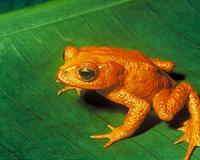| . |  |
. |
Houston TX (SPX) Mar 05, 2010 Thanks to a pair of University of Houston researchers who found a possible new solution to a 163-year-old puzzle, ecological factors can now be added to physiology to explain why animals grow bigger in the cold. Their results were published in the February issue of the American Naturalist, offering new insight to Bergmann's rule that animals grow larger at high, cold latitudes than their counterparts closer to the equator. While traditional explanations have been based on body temperature being the driving force of this phenomenon, this group of community ecologists hypothesize that better food makes high-latitude animals bigger. Chuan-Kai Ho, a Ph.D. graduate from UH in ecology and evolution, his adviser and UH professor of biology and biochemistry Steven Pennings, and their collaborator Thomas Carefoot from the University of British Columbia opened up a new line of study into Bergmann's rule. The research program in Pennings' lab over the last decade has offered the most extensive work done on the general problem of latitudinal variation in plant-herbivore interactions. This latest finding from Pennings' groundbreaking research at UH on this subject came from one of Ho's doctoral dissertation chapters. "Because the American Naturalist is one of the top journals in our field, publishing at this level is a mark of great success for a Ph.D. student," Pennings said. "It's also a reflection of the strength of our graduate program in the ecology and evolution division of UH's department of biology and biochemistry." Ho, now a postdoctoral student at Texas A and M at Galveston's Armitage and Quigg Laboratory, also has another chapter from his UH dissertation on salt marsh food webs published in Ecology, another top journal in the field. Pennings received a doctoral dissertation improvement grant for Ho in 2007-2008 from the National Science Foundation that provided funding for Ho to run chemical analyses on leaves from different latitudes to assess their nutritional content. Studying three different plant-eating species - grasshoppers, planthoppers and sea snails - collected from along the Atlantic coast to Japan, respectively, the researchers fed these herbivores plants from both high and low latitudes and found that they all grew better when fed plants from the higher latitudes. This indicates that Bergmann's rule could reflect that plants from high latitudes provide better food than those from low latitudes. These latest findings, according to Ho, indicate that studies of Bergmann's rule should consider ecological interactions in addition to the more traditional theories of physiology based on responses to temperature. Over the years, work in Pennings' lab has shown that, although low-latitude plants are less nutritious and better protected by chemical defenses, they experience heavy damage from herbivores, which are more abundant at low latitudes. Future study, Pennings adds, should focus on why there are more herbivores at lower latitudes despite the lower-quality food sources. A likely explanation is that herbivore populations are limited at high latitudes by a short growing season and high death rates during cold winters. "While the explanations discovered in our current study only apply to herbivores, it may be that carnivores and omnivores also might grow larger as a consequence of eating larger herbivores," Ho said. "Examining such patterns and underlying mechanisms in nature will help us understand what currently is going on and what might happen down the line to our ecosystems." A high-resolution photo of Chuan-Kai Ho, armed with an industrial vacuum cleaner collecting insects from marsh vegetation along the East Coast, is available by contacting Lisa Merkl.
Share This Article With Planet Earth
Related Links the missing link Darwin Today At TerraDaily.com
 El Nino And Pathogen Killed Costa Rican Toad
El Nino And Pathogen Killed Costa Rican ToadNew York NY (SPX) Mar 05, 2010 Scientists broadly agree that global warming may threaten the survival of many plant and animal species; but global warming did not kill the Monteverde golden toad, an often cited example of climate-triggered extinction, says a new study. The toad vanished from Costa Rica's Pacific coastal-mountain cloud forest in the late 1980s, the apparent victim of a pathogen outbreak that has wiped ou ... read more |
|
| The content herein, unless otherwise known to be public domain, are Copyright 1995-2010 - SpaceDaily. AFP and UPI Wire Stories are copyright Agence France-Presse and United Press International. ESA Portal Reports are copyright European Space Agency. All NASA sourced material is public domain. Additional copyrights may apply in whole or part to other bona fide parties. Advertising does not imply endorsement,agreement or approval of any opinions, statements or information provided by SpaceDaily on any Web page published or hosted by SpaceDaily. Privacy Statement |